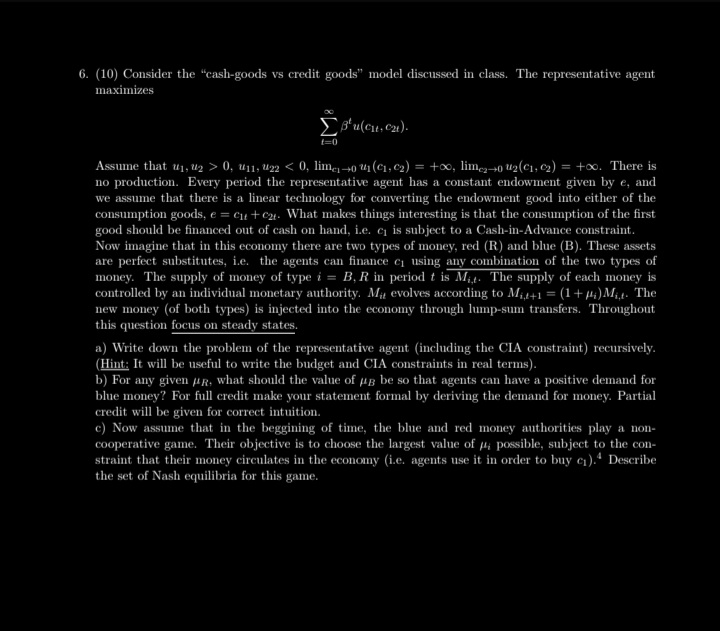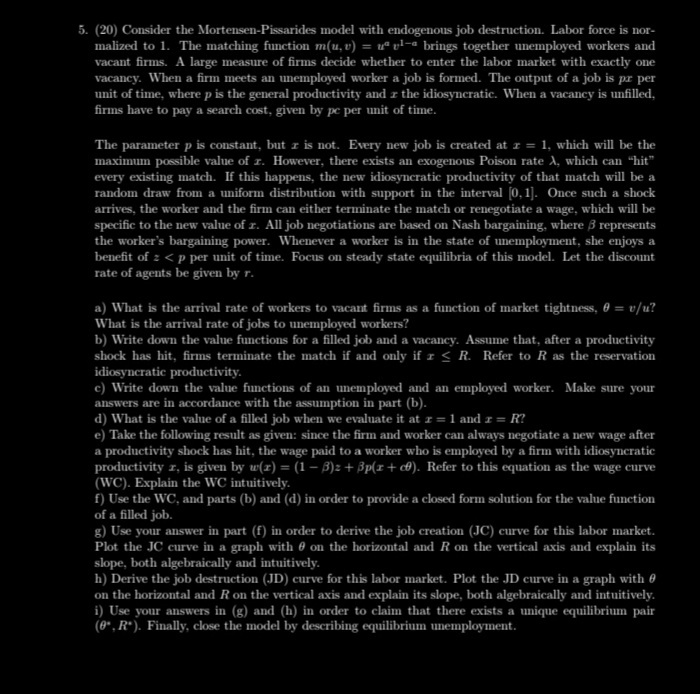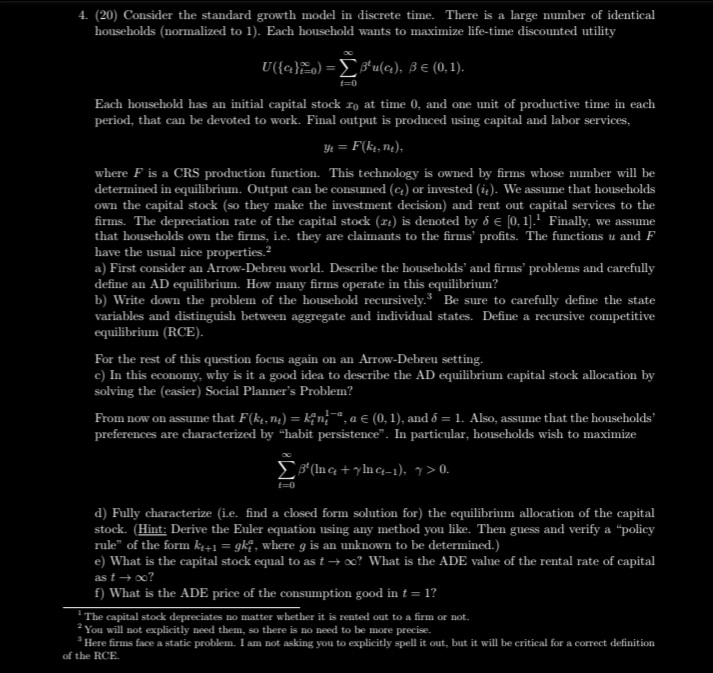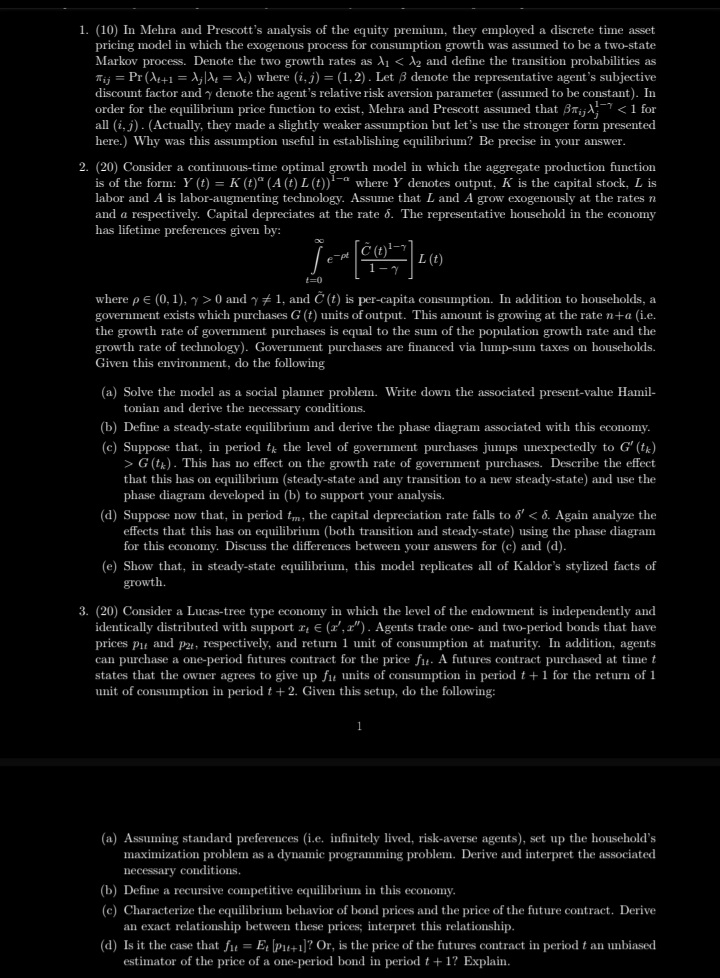



economics 404 explain in details
6. (10) Consider the "cash-goods vs credit goods" model discussed in class. The representative agent maximizes B'u(Cut, Cat). Assume that u1, 12 > 0, #11, #22 0. d) Fully characterize (i.e. find a closed form solution for) the equilibrium allocation of the capital stock. (Hint: Derive the Euler equation using any method you like. Then guess and verify a "policy rule" of the form ki+1 = gly, where g is an unknown to be determined.) e) What is the capital stock equal to as t -+ co? What is the ADE value of the rental rate of capital as t -+ 00? f) What is the ADE price of the consumption good in t = 17 The capital stock depreciates no matter whether it is rented out to a firm or not. You will not explicitly need them, so there is no need to be more precise. Here firms face a static problem. I am not asking you to explicitly spell it out, but it will be critical for a correct definition of the RCE.1. (10) In Mehra and Prescott's analysis of the equity premium, they employed a discrete time asset pricing model in which the exogenous process for consumption growth was assumed to be a two-state Markov process. Denote the two growth rates as A1 2 and define the transition probabilities as mij = Pr()+1 = AjlMe = >;) where (i, j) = (1, 2) . Let & denote the representative agent's subjective discount factor and y denote the agent's relative risk aversion parameter (assumed to be constant). In order for the equilibrium price function to exist, Mehra and Prescott assumed that Brijd, -7 0 and y / 1, and C (t) is per-capita consumption. In addition to households, a government exists which purchases G (t) units of output. This amount is growing at the rate n ta (i.e. the growth rate of government purchases is equal to the sum of the population growth rate and the growth rate of technology). Government purchases are financed via lump-sum taxes on households. Given this environment, do the following (a) Solve the model as a social planner problem. Write down the associated present-value Hamil- tonian and derive the necessary conditions. (b) Define a steady-state equilibrium and derive the phase diagram associated with this economy. (c) Suppose that, in period to the level of government purchases jumps unexpectedly to G' (ty) > G (the) . This has no effect on the growth rate of government purchases. Describe the effect that this has on equilibrium (steady-state and any transition to a new steady-state) and use the phase diagram developed in (b) to support your analysis. (d) Suppose now that, in period tm, the capital depreciation rate falls to o'














